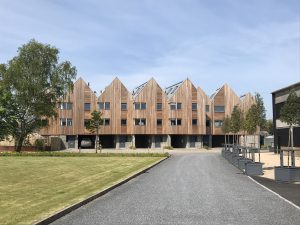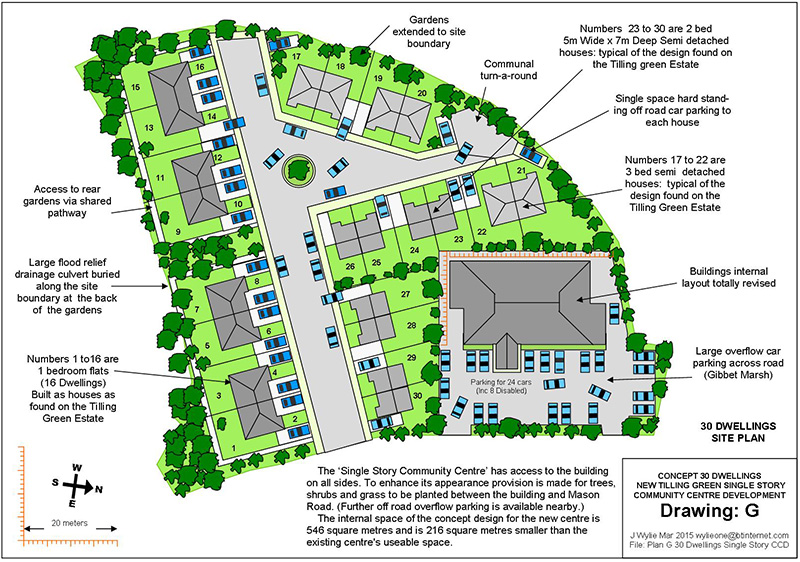As the Rye Neighbourhood Plan is a “live” document, periodically key issues are reconsidered by Rye Town Council, and on Monday this week , the Neighbourhood Plan Coordinator, Colonel Anthony Kimber brought forward two issues – the lack of affordable housing and the “strategic gap” between Rye and Rye Harbour.
For each, there was a detailed supporting paper summarising the background and these can be found on the council’s website with the papers for the April 19 Planning meeting, items 74a and 74b.
Affordable Housing
Of the two, the lack of provision of affordable housing in Rye drew the most comments and affordable housing provision remains a key plank of the Rye Neighbourhood Plan. The government defines affordable housing as “social rented, affordable rented, shared ownership or intermediate housing (80% market rent), provided to specified eligible households whose needs are not met by the market. It can be a new-build property or a private sector property that has been purchased for use as an affordable home.”
The situation with affordable housing is complex and local factors are typical of those in other attractive locations close to London where land and dwelling costs continue to rise, and throughout the Covid-19 period we have seen that housing demand was high and supply low.

There is particularly high demand for second homes and “buy to let” properties with little recent development of “affordable homes” by the “not for profit” housing associations and developers, and drawing on the work behind the Rye Neighbourhood Plan, the briefing paper provided a comprehensive background to the subject.
Affordable homes should be around 80% of market costs, but in Rye, even at this level, they are unaffordable for first time buyers on low pay. In fact, one of the only prospects for a really low cost home is self or custom build, but this takes expertise, time, extended effort and, of course, the land. However the cost could be well below the government defined “affordable housing”.
Ways to provide affordable housing
The way that affordable housing is usually provided includes:
- Encouraging developers to build a proportion of new affordable homes into every scheme over 10 dwellings. The Neighbourhood Plan requires 30% affordable, but developers, with high land and building costs, can claim that it would be nonviable to include such homes.
A calculation for each development is made for Rother District Council which has the final decision about what the developers’ contribution – money, infrastructure or affordable homes – might be. And in Rye we have seen the developer of the Lower School Site (Ferry Road) have a viability calculation accepted by Rother District Council that excludes affordable homes in the scheme.
- Rother District established Alliance Homes as an “arms-length company” to help meet the demand for affordable homes and there is a Rother wide programme that claims to see the delivery of at least 1,000 new homes over the next 15 years. Of these some 350-400 could be in the “affordable” category.
Rother District says that Alliance Homes will seek every opportunity to ensure that additional affordable homes can be delivered by working with different providers drawing down central government funding. In Rye, Alliance Homes is looking to develop the Rother owned site in Cyprus Place, currently let to Rye Hire and that proposal has been the subject of separate reports in Rye News.
Tilling Green site still undeveloped

- By Housing Associations such as Optivo. Up to 2017, the then Amicus Horizon association planned to develop the Tilling Green former school, but the company withdrew after planning challenges and because it was merging to form Optivo. That association owns a large number of dwellings in the west of Rye in Valley Park and Tilling Green, but currently there are no other schemes being proposed.
- By the local Council backing the building or buying of homes under various government schemes such as Community Land Trust (CLT). Such trusts are set up and run by people to develop and manage homes as well as other assets and the start for any CLT is to identify suitable land.
There is land identified in the Neighbourhood Plan, such as at either the Tilling Green or Freda Gardham former schools, but it needs to be secured from the owner, East Sussex County Council.
The meeting discussed all this and more. Some Councillors favoured the sort of policies adopted in Cornwall and parts of Wales restricting some new homes to local people, but the system is difficult to manage and police. For these reasons Rother District had opposed the inclusion of such policy when the Neighbourhood Plan was drafted.
Urgent need for local families
There were some passionate interventions, particularly by Councillor Shaun Rogers who underscored the urgent need to find solutions.
With little local affordable housing in early prospect, Colonel Kimber proposed a dialogue with planners at Rother District Council and with developers and landowners to explore solutions, and any local initiatives might draw on some being floated at national level, such as establishing housing delivery contracts with builders to get away from “land banking”, setting specific targets for affordable housing, and measures to encourage small developers to take on affordable housing projects – and Colonel Kimber and the Town Clerk were asked to look at ways to move the issue forward.
The strategic gap
The second issue on the agenda was the “strategic gap” between Rye and Rye Harbour as Rother and Rye Neighbourhood Plan policies both identify the “gap” as an area where development “is to be strongly resisted”.

Colonel Kimber’s paper underscored the importance of the gap as a measure to protect the unique character and setting of Rye from development that might appear to join the Rye and Rye Harbour settlements – and the gap is also partly designated as a Site of Special Scientific Interest.
Some Councillors raised the historical proposal for a marina development which was proposed for the gap. This was dismissed at the time for being beyond the development boundary of Rye and remains outside any allocation of the Rye Neighbourhood Plan.
It is known that Martello Developments have secured the land comprising the strategic gap, but any proposals for it are unclear.
Pollution problems
During the discussion, Colonel Kimber noted that the Harbour Road Southern Water sewage treatment plant, just to the south of the strategic gap, has been the subject of some interest because after extreme rainfall, when the sewage system tends to overload, it can emit diluted sewage through its Combined Sewage Outfall (CSO) into the River Rother.
This can lead to pollution of the river and nearby beaches. CSO outfalls are now subject to new nationwide attention including a Parliamentary bill.
This was a valuable strategic planning discussion, which highlighted two important issues to Rye Planners that both need to remain high on the planning agenda.
Image Credits: John Minter , Nick Forman , Kevin McCarthy .



